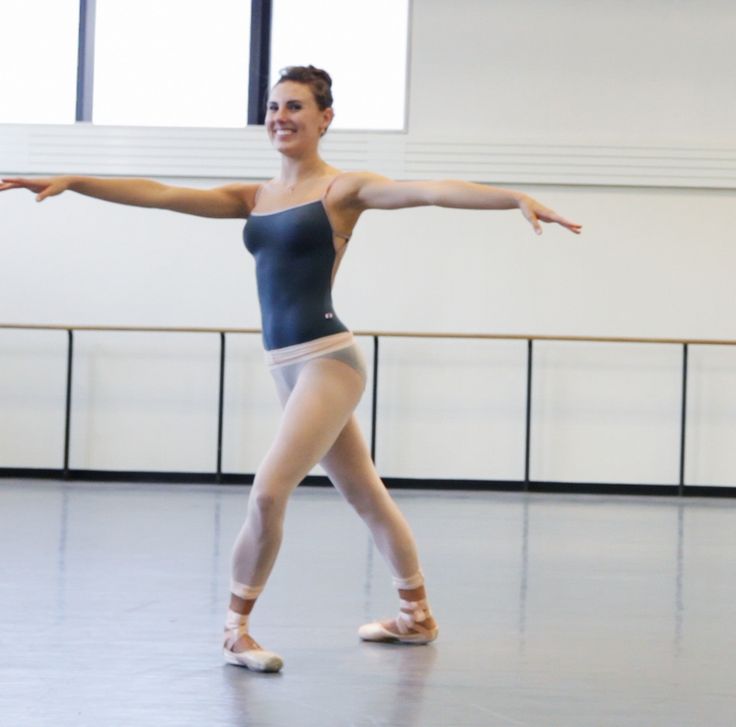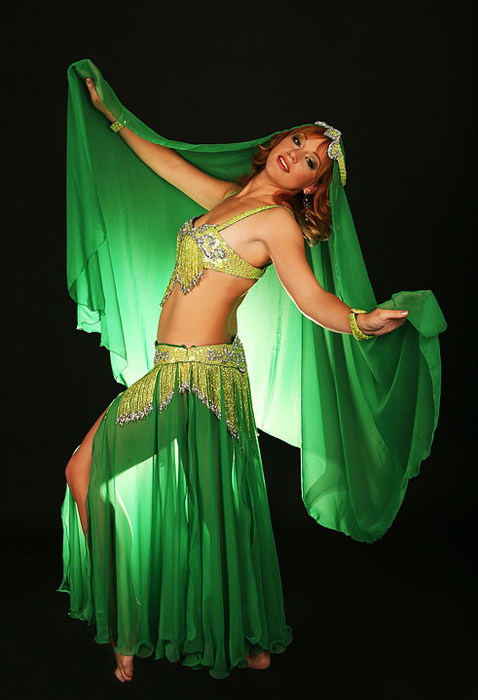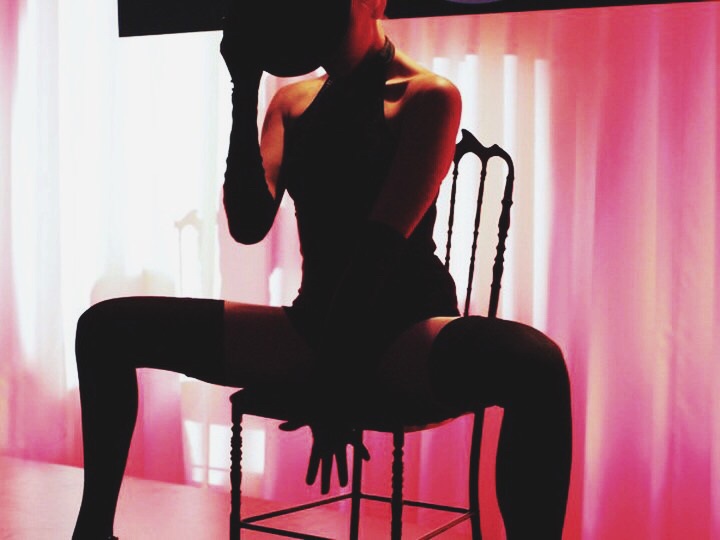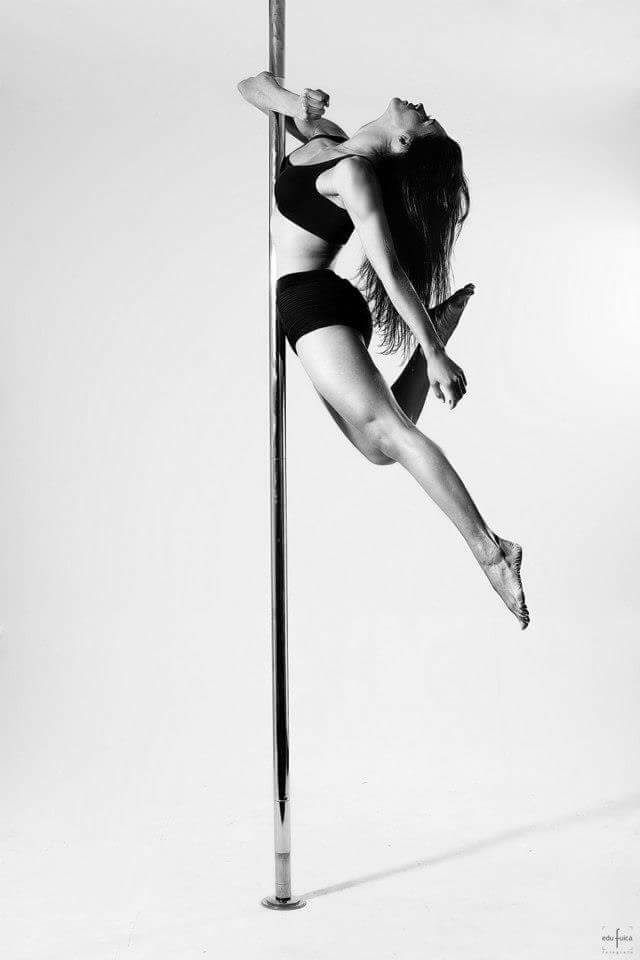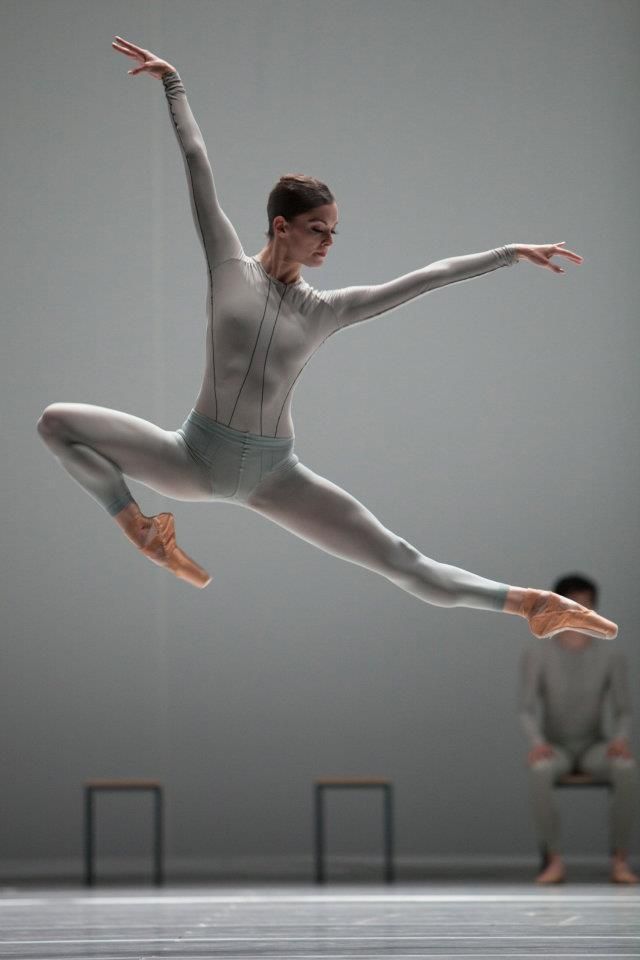Teach me how to break dance
How to breakdance step by step
The following 3 videos will teach you how to breakdance step by step. We recommend that you watch these lessons in order as they are arranged from easiest to hardest. These moves come directly from our breakdancing courses which you should check out if you want to learn more. A word of caution, you must be careful when you attempt these moves. Be sure to study the movements very carefully and slowly and then ease into them. For other online dance classes click here.
Free mini video course for break dance:
Beginner break dance moves
Breakdancing move #1: 3 Step
The 3 step is one of the most popular beginner break dance moves. It consist of 3 steps that are done in a circle. In this move you will start with one leg extended in front of you and then will switch the legs as fast as you can so that the other leg is extended, from there you bring the leg side where you end up in a kind of push up position. Learn how to sync the arm switches with your leg switches.
Want More?
The Complete Breakdancing Course For beginners (No experience needed)
Learn simple but impressive moves step by step! You will learn footwork moves, ground moves as well as freezes. This video course has 3 modules with +3 hours of video instruction. Delivered through instant online access.
Learn more & Buy it here (Click here)
Breakdance move #2: Corkscrew Up:
This is another cool bboy move. The corkscrew up is perfect for when you need to get up from the ground in a “cool” and smooth way. You can do this move on it’s own or from any other combination of moves.Here you will develop strength and balance as you push off the floor to spin upwards and around.
One more to go below!
Want More?
The Complete Breakdancing Course For beginners (No experience needed)
Learn simple but impressive moves step by step! You will learn footwork moves, ground moves as well as freezes. This video course has 3 modules with +3 hours of video instruction. Delivered through instant online access.
Learn more & Buy it here (Click here)
Break dance move #3: The baby freeze
Learn how to do a baby freeze move in this video. Freezes in Breakdancing are meant to draw attention to the dancer and are usually put in at the end of some footwork combination like the 3-step above! The baby freeze is great to start out with since its small. It still requires lots of coordination and practice so take it slowly and make sure you don’t skip anything.
Get Barry’s full course now:
The Complete Breakdancing Course For beginners (No experience needed)
Learn simple but impressive moves step by step! You will learn footwork moves, ground moves as well as freezes. This video course has 3 modules with +3 hours of video instruction. Delivered through instant online access.
Learn more & Buy it here (Click here)
History of Breakdancing:
Breakdancing was founded by the black community and Puerto Rican kids in the 1970s. And it really became popular after James brown’s single “Get On The Good Foot” where his busted out his high energy footwork dancing. After that, the kids in New york started to copy his moves and eventually it evolved to be called b-boy or break dancing. At that time most of the style was ground footwork combinations without any of the fancy stuff you see today like windmills or back spins that are popular today. There were also breakdancing battles between gangs or clicks.
At that time most of the style was ground footwork combinations without any of the fancy stuff you see today like windmills or back spins that are popular today. There were also breakdancing battles between gangs or clicks.
Another dance called “uprock” influenced the b-boy dancers. In this dance style, the dancers mimic fighting moves into rhythmic dance moves that opponents would use to ‘battle’ against one another.
The music is not restricted to Hip Hop anymore. These days dancers choose Techno, Jazz, electronic, pop and an other types of music that suites their style.
Other styles:
Back to free Hip Hop dance videos page
How to Ballroom dance
How to dance at clubs and parties
Online dance classes
How Did Breakdance Get Started?
Popularized and fashioned by African Americans, breakdancing has become one of the most popular dance styles today.
Breakdancing or B-boying is an urban art that emphasizes synchronization, gymnastics, precise body gestures, elegance, and creativity.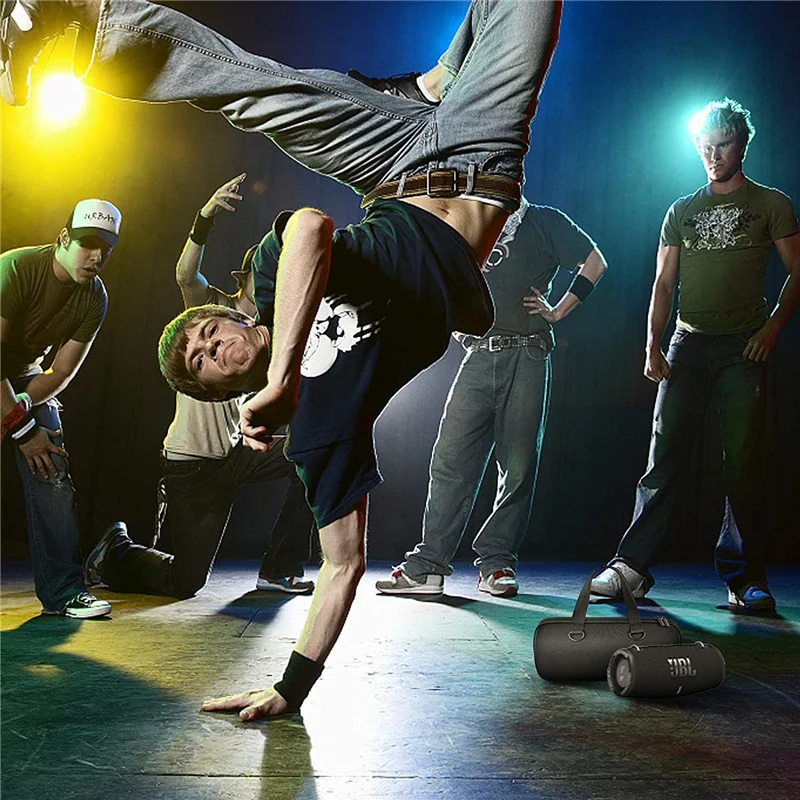
It is the most well-known of all hip hop and rap music dance forms, introduced during the early 1970s when the hip hop movement started.
The name 'Boomerang' comes from the position of the legs that are balanced to form a V shape. Have you ever wondered, "why is it called breakdancing?". Head over to Superprof to learn everything about the history of this unique dance form (Source: Pixabay)Do you want to learn how to dance to breakdancing music? From whirling on your head or hands to employing the stylized technique, this famous, frenetic type of dance has it all.
Additionally, the dance genre has its own subculture, lexicon, and history and involves more sophisticated gymnastic routines than most other dance forms.
When you hear the word breakdancing, what comes to your mind? Do you think of dangerous people dancing on the street, or do you think about true human talent to slide and move across the dancing floor performing unique dance moves?
Well, whatever you think it is, breakdancing is a significant dance form that is being practiced all over the world today.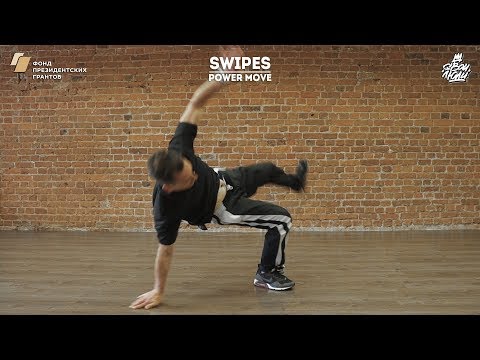
And while breakdancing does not appeal to a much older generation, today's youth seems much more fascinated by it.
The best Dance tutors available
Let's go
Where Did Breakdancing Originate?
When learning breakdancing, you may have wondered, "where did breakdancing originate?" or something like "when did breakdancing start" may have crossed your mind at some point in your life.
Ethnic Roots
While some people may think breakdancing is a new dance form, its history dates to the 1960s and 1970s.
So, when did breakdancing start? According to several authentic sources, breakdancing began in New York City during the early 1960s and 1970s. It mainly features the Latino and African popularity of Americans.
We do not mean to profile anyone racially, but during the 1960s and 1970s, the street gangs in New York City mainly included the African American and Latino American population.
Combative Roots
Breakdancing is also rooted in martial arts.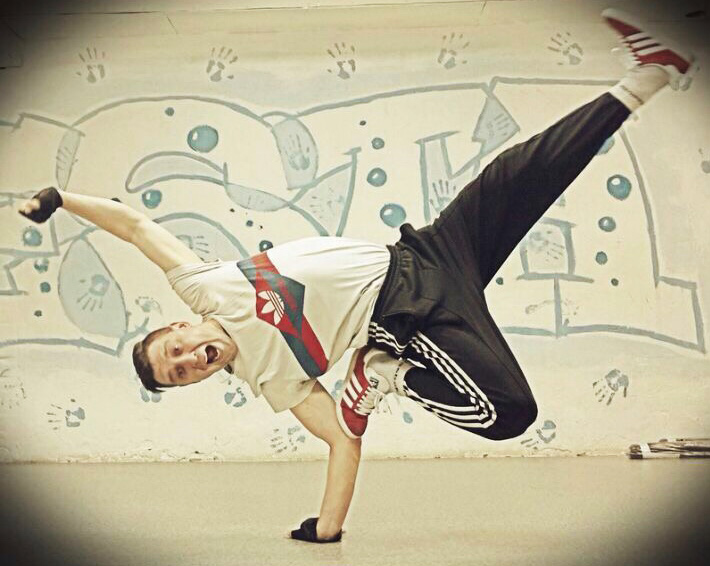 This is particularly true because the groups mentioned above learned certain moves to defend themselves in the streets.
This is particularly true because the groups mentioned above learned certain moves to defend themselves in the streets.
While most of the initial steps of breakdancing derived from self-defense moves, they quickly evolved into something much more complex and athletic.
Physical Requirements
Most of these moves could only be practiced by physically very fit people. So while learning about breakdancing, it is crucial to understand that it is very physical and demanding.
Therefore, you shouldn't be surprised when you see dancers with toned bodies and big biceps that could make almost anybody jealous.
Find dance classes here on Superprof.
Breakdance was initially performed for self-defense when gangs used to fight in the streets. It has since evolved into more complex and athletic moves that take years to master (Source: Unsplash)The Name
But, why is it called breakdancing?. The terminology 'breakdancing' may confuse many people as breakdancing is a very physical form of dance.
Nonetheless, the term 'break' refers to the sound and rhythms produced by DJs who mix several sounds to create a continuous beat that does not stop. Every time the beat shifts, the dancer adopts a new move.
The Music
The technique was explored by Kool Herc, A Jamaican DJ living in New York City.
Kool Herc created inspiring rhythms from two similar songs with percussion beats and called them cutting breaks.
It is known that DJ Kool Herc would continuously play the breaks and switch from one song to another after chanting "B-boys go down!" during his concerts.
These chants signaled people on the dance floor to perform risky and physically demanding moves. Hence, this is how breakdancing was initiated.
The Evolution
After a few years of popularity, new breakdancing moves started to teach in this dance form. These were known as 'locks' and 'pops' that were a little unique from the original breakdancing features during the 1960s.
During the 1980s, Micheal Jackson performed some aspects of breakdancing music in his concerts. Since he was one of the most famous people, people were highly inspired by his dance moves.
The breakdancing genre skyrocketed to fame like never before when Michael Jackson started performing movements such as 'The Moonwalk".
Since breakdance had become so popular, music producers insisted on including R&B, pop, and breakdancers in most music videos.
Britney Spears embraced breakdancing by making it a worldwide phenomenon. As a result, breakdancing now symbolizes a massive culture and ideology.
Features Of Breakdancing
Have you ever tried breakdancing after watching a professional perform those unique moves? Well, you would be lying if you haven't. Breakdancing involves a very 'street-looking,' vintage, and grungy style.
For example, street dancers may wear jeans or baggy pants that give their body space and freedom to move when performing very physical moves.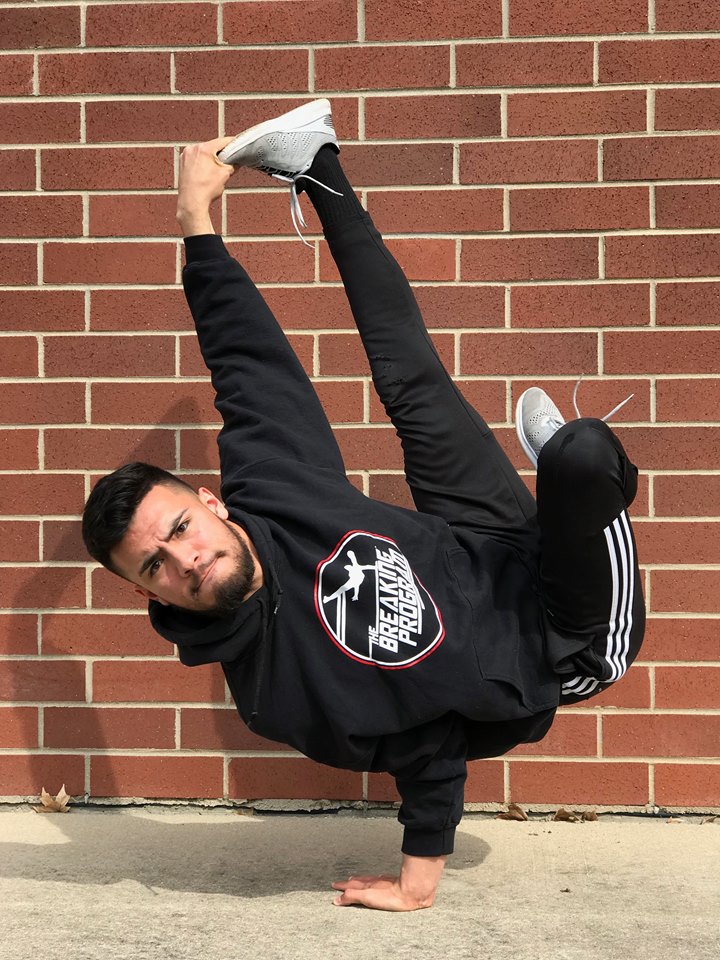
They may also baseball hats to protect their heads when performing spins or running shoes for better grip to avoid injury.
While breakdance is considered very improvised, breakdancers incorporate some classic techniques and moves in their dances to leave their audience in absolute awe!
Below is a list of some of the unique features of the breakdancing dance genre.
Headspins
Breakdancing is empty without any headpins. If you are doing headspins, you need to make sure that the surface you do it on is soft to help your head move smoothly while protecting it at the same time.
Trying headspins on concrete is one of the worst ideas you could ever think of! Yet, while headspins are unnatural, they are still the most recognized moves in breakdancing.
Windmill
One of the most classic breakdancing moves is the windmill. Originally derived from Kung Fu, the windmill requires repeated motion where the dancer moves their upper body.
Boomerangs
The name 'boomerang' comes from how the legs are kept in the air creating a V shape.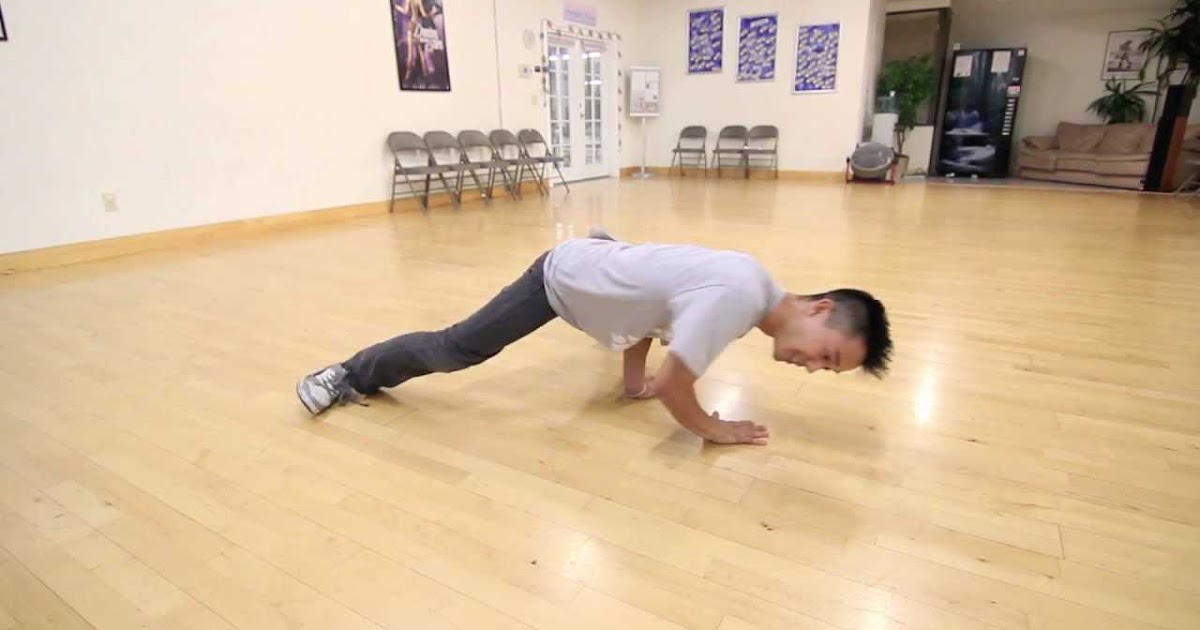
This move is very demanding, and breakdancers need to be exceptionally physically fit and flexible to support the weight of their body on their hands.
If you feel fascinated by this move, you can get a professional to teach it to you. However, do not try this move at home as it can be hazardous to try it out yourself.
Dancing to breakdancing music can be dangerous if your body is not physically fit for it. Some athletic and gymnastic moves require a lot of physical strength (Source: Unsplash)The best Dance tutors available
Let's go
Flares
His flares move was initially derived from gymnastics. To perform a large, you need to have a lot of upper body strength as you have to move the legs around your upper body without touching the ground.
The wider you spread your legs apart, the easier it becomes to perform this move. Hence, it would help if you had a lot of upper body strength even to begin balancing your legs in the air.
The Best Breakdancing Music To Dance To
You may know that dance is lifeless without music if you love dancing! Fortunately, breakdancing has been around the corner since the 1960s ad a lot of music producers have produced memorable songs for this dance genre.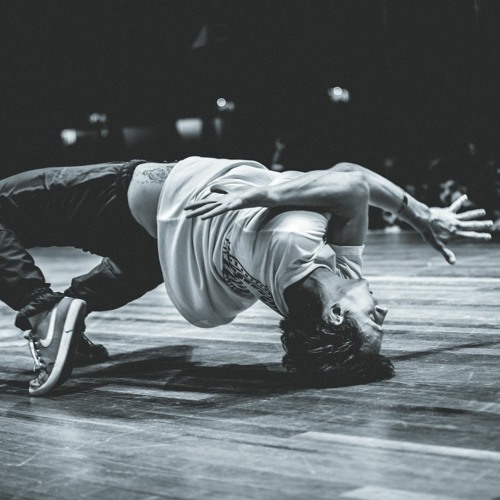
Moreover, these artists have successfully created a long list of perfect songs for performing breakdancing moves.
Here is a list of some of the best songs to perform breakdance to
- Paid in full – Eric B and Rakim
- Dancing Machine – Jackson Five
- The Mexican – Babe Ruth
- Beat Box – Art Of Noise
- Get on the good foot – James Brown
- Plsnet Rock – Afrika Bambaataa
- It's Like That – Run DMC
Most of these songs were recorded in the 1970s, the 1980s, or the 1990s. These three decades were when breakdancing became one of the most popular dance forms.
How Difficult Is Breakdancing?
If you think breakdancing is a dance form you want to learn, you can start practicing certain beginner breakdance moves in your spare time.
Imagine dancing to your favorite breakdancing music and performing all the activities freely without facing any difficulties. Your friends and family would be impressed!
While many people think they can learn dancing on their own, the truth is that dancing is something that requires step-by-step lessons to get your body used to the new moves.
When you try learning breakdancing on your own, you may feel frustrated by how slow things are going and may want to move to an advanced level right away.
This can be dangerous, especially when your body is not physically fit enough to perform certain moves like flares and boomerangs. You can hurt yourself or even break a bone!
In such cases, it is best to hire a professional tutor who takes things slowly and teaches you everything at a slow pace.
This way, not only will your body strengthen with time, it will get used to new moves, and you will be able to move towards advanced forms of breakdancing more quickly and easily.
Where To Find The Best Breakdancing Tutors?
Superprof has millions of professional tutors who can teach you breakdance quickly. In addition, you can hire a personal tutor that offers lessons tailored to the needs of students.
Every student has different abilities and learning capabilities. Hence, taking classes in a classroom may not benefit students who require special attention.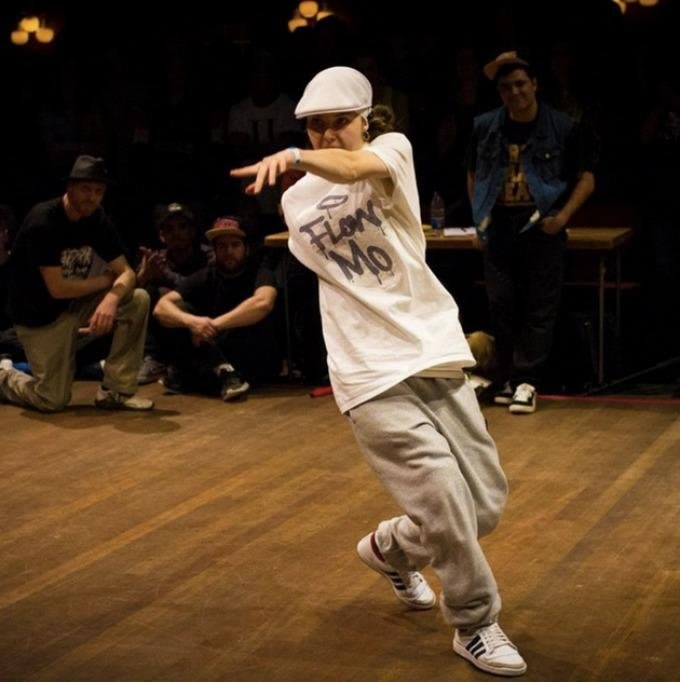
Moreover, you can either take lessons online or in-person according to your convenience. The best thing about Superprof is that the first lesson is always free.
This gives you the chance to decide whether you want to continue with a specific tutor or shift to another one before paying.
When taking lessons with Superprof, you will be able to perform over 40 moves efficiently with rhythm, style, and balance by the time you are done.
Tutors at Superprof will teach you all the significant breakdance components, including freezes, footwork, balance, ground moves, and much more!
How to improve yourself in breakdancing
Red Bull b-boy athlete Killa Kolya gives 10 clear tips - a complete guide to breakdancing.
You can start at home!
If you have a desire to dance breaking, try this direction, you can even start at home. Find tutorial videos on youtube and try to repeat what they show there. And if the desire to dance has already finally taken shape, then it's time to find any studio where there is a break dance and sign up.
Form - free!
Clothing should be loose: not to fetter anywhere, not to squeeze, not to tighten. An excellent option can be hoodie pants and a T-shirt, you can even go up a size. And sneakers or sneakers, whoever is more comfortable.
Breakdance equipment also includes a hat and a jacket: a hat is needed in order to perform elements below, where the head touches the floor, so that there is protection, and the jacket helps to spin - it glide better, and also serves as protection.
Everyone will find their form
© Dean Treml/Red Bull Content Pool
And then everyone will find their form. You can see what your favorite b-boys have chosen as their equipment. You will see that someone has chosen tight clothes for themselves, someone prefers jeans. After all, the form is a continuation of the dance style. So, when you form your style, you will understand what is better to dance in. For example, if there is a big emphasis on stretching, it is better to give preference to loose clothing, it will be more comfortable in it.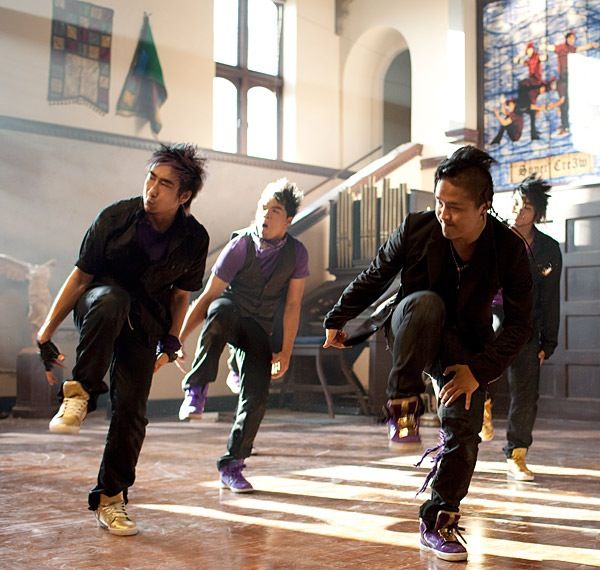
The Basic Approach - The Foundation of Your Workout
© Ali Bharmal / Red Bull Content Pool
The Basic Approach
You can organize your workout according to the classic scheme: warm-up, study movements, pumping and stretching at the end of the workout. If you approach it from the dance side, then toprock is the best warm-up. This is a dance that does not have complex elements and physical activity, but at the same time, arms, legs, and the body are involved in it. If you give it 15-20 minutes, you can warm up well, here you need to follow the sensations. After that, you can move on to the movements below, for example, use the calls down and footwork. And when you feel that you are already in the right condition, you can proceed to the study of complex elements. And as a download, I most often do the breakdance elements themselves, I do them for the number of approaches: this is how the element is worked out and the download occurs. And finally, the basic stretch.![]()
Atmosphere
When choosing a place to train or dance, remember that atmosphere matters. There must be a spirit of creativity and the same people, close in spirit, from whom you will charge and charge them. To have an energy exchange. Plus to everything - there should be a good floor. For b-boys, it is important that there is a slippery floor, it is easier to perform spinning elements on it.
The choice is yours
If you break breaking into directions, then for each you need to master certain movements that will help you master the direction itself. For example, for toprock, the quality of the hull is important. That is, so that not only the arms and legs work, but the body shakes. In general, for any dance direction, the basis of the dance is the quality. For breaking use funk-kach.
For footwork there is a basic movement - Russian Steps: squatting, not holding hands, swings legs alternately. If you have seen Russian folk dances, then you can imagine what it is about.
It is imperative to master this movement so that all other movements and elements of direction can be easily obtained.
Don't give up!
© Little Shao/Red Bull Content Pool
For more physically demanding moves like power moves and power tricks, you need to be able to do different handstands, headstands, shoulder stances, and so on. And from here it will be easier to learn more complex elements.
Do not throw
If movement is not given, the reason must be found. If we are talking about simple directions, then, most likely, there is not enough technique, and you just need to work on this movement more.
If a complex element is not given, most likely, there is not enough physical preparation and you need to pump up or learn something additional about this element.
It happens that an element is not given at all for a very long time, and then you need to give it time. Don't get hung up. Continue to teach him, repeat each lesson, but do not torture yourself with questions why he is not given. Each element has its own period and operating time. The main thing is not to throw.
Each element has its own period and operating time. The main thing is not to throw.
Mood, Attitude, and Approach
© Dean Treml/Red Bull Content Pool
Mood, Attitude, and Approach
The essential elements for a successful session are your mood, your attitude, what you want to get from this workout, and your approach, how serious are you. This is the basis that is important for any workout and result.
Protect yourself!
To prevent injuries, it is important to learn the technique of the elements. When you approach the study of a certain element, it has its own technique. In order to learn how to do it as safely as possible, you need to master this technique.
Well, protect yourself. As I said before, wear a hat and sweater to cushion falls. Because in the process of studying the elements, there will still be some minor bruises, bruises, abrasions. But this is inevitable, because this is an extreme dance.
Protect yourself!
© Nika Kramer/Red Bull Content Pool
Serious injuries such as dislocations or fractures are very rare. And they are always the result of an illiterate approach, when you are not sufficiently prepared to try something difficult.
And they are always the result of an illiterate approach, when you are not sufficiently prepared to try something difficult.
Well, pumping helps against injuries: the body becomes stronger and easier to endure a collision with the floor. And with experience, you learn the art of the right fall, a cat skill is developed. This is where stretching helps.
Dance with what doesn't hurt
If you are injured, approach wisely. If necessary, see a doctor or take a break from training to recover. And if the injury is minor, wait for everything to pass, but you can not miss training, just distribute the load so as not to use the sore spot. As I tell my students: if your arm hurts, dance top rock, if your leg hurts, stand on your hands.
Stretch, people!
© Ali Bharmal / Red Bull Content Pool
Stretching matters
Stretching is very important, a key moment not only for dance, but also for the well-being of a person. The better you stretch, the better your body obeys you. Stretching is very important to me because it is the foundation of my dance. Everything I do in dance is done with my stretched body. That's where my style came from. But in general, stretching is important for every person in dance: sports, life. So stretch, people!
Stretching is very important to me because it is the foundation of my dance. Everything I do in dance is done with my stretched body. That's where my style came from. But in general, stretching is important for every person in dance: sports, life. So stretch, people!
A Brief History of Soviet Breakdancing • Arzamas
You have JavaScript disabled. Please change your browser settings.
- History
- Art
- Literature
- Anthropology
I'm lucky!
History, Anthropology
What is Soviet breakdance and when did it appear? What did the first dance battles look like? Why did the style eventually die out in Soviet times? And how did he influence the birth of Russian rap? We tell about the history of Soviet breakdance
Author Olga Krupnik
Street dance is one of the elements of the hip-hop culture that originated in the New York working environment in the 1970s.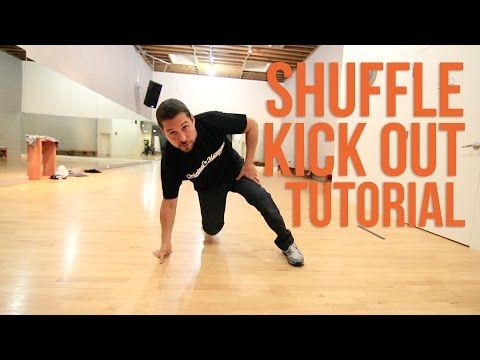 Breaking, the founding style of street hip-hop dance, DJ Lance Taylor, better known by his pseudonym Afrika Bambaataa, was the first to identify five components of hip-hop culture: MCing (rap), DJing, breaking, graffiti and knowledge (philosophy). He began the history of the development of the genre in the USSR.
Breaking, the founding style of street hip-hop dance, DJ Lance Taylor, better known by his pseudonym Afrika Bambaataa, was the first to identify five components of hip-hop culture: MCing (rap), DJing, breaking, graffiti and knowledge (philosophy). He began the history of the development of the genre in the USSR.
Breaking was brought to the USSR in the 1980s, and the popularity of the style peaked at 1985-1990s. This period will be called the first wave of breaking in Russia. The development of dance coincided with perestroika and was just as rapid. In a short time, breaking has gone from closed apartments to major festivals and cinema.
However, few predicted a long life for this dance style: it was considered an imported fashion that did not have a foundation for further development. With the collapse of the USSR, interest in the style really faded. Breaking returned to Russia only in the 2000s.
1980–1982
1980 Olympics and new fashion
Olympic bears.
 Moscow, 1980 © Roman Denisov / TASS
Moscow, 1980 © Roman Denisov / TASS The 1980 Summer Olympics opened the iron curtain, and American culture penetrated Russia: Pepsi-Cola, Fanta appeared on the shelves, and sneakers came into fashion. English has ceased to be a professional quality and has become an attribute of a good liberal arts education. Increasingly, translated books and anglicisms appeared in speech.
1983
Russian rock and first videocassettes
A shot from the movie "Rocky". Directed by John Avildsen. 1976 © Chartoff-Winkler Productions
Foreign tape recorders and video cassettes have appeared in some homes. And Hollywood action movies like "Rocky" have become an alternative to Central Television. 1983, among other things, was the heyday of Russian rock: in May, the first festival was held at the Leningrad Rock Club, and informal associations began to become the norm.
1984
Imported breakdancing, dyed sneakers and aerobics
This is the time of circus art and plastic theater. The main heroes of 1984 were the clown theater "Litsedei" and Vyacheslav Polunin. At the same time, mass production of the first domestic tape recorder "Electronics VM-12" began - it was sold everywhere. Now the video can be watched at home.
The main heroes of 1984 were the clown theater "Litsedei" and Vyacheslav Polunin. At the same time, mass production of the first domestic tape recorder "Electronics VM-12" began - it was sold everywhere. Now the video can be watched at home.
Breaking gradually penetrated the families of diplomats, employees of embassies and the Ministry of Foreign Trade: they got acquainted with the dance abroad. The rest copied the movements and tricks of the heroes of the first American films about break dancing: "Breakin'" (1984), "Breakin' 2: Electric Boogaloo" (1984) and "Beat Street" (1984).
There was also a request for everyday dance practices: aerobics became incredibly popular among women. The Melodiya record company even released a special soundtrack - a vinyl record for rhythmic gymnastics. So dance and bodily gymnastics became the norm.
Rhythmic gymnastics vinyl sleeve.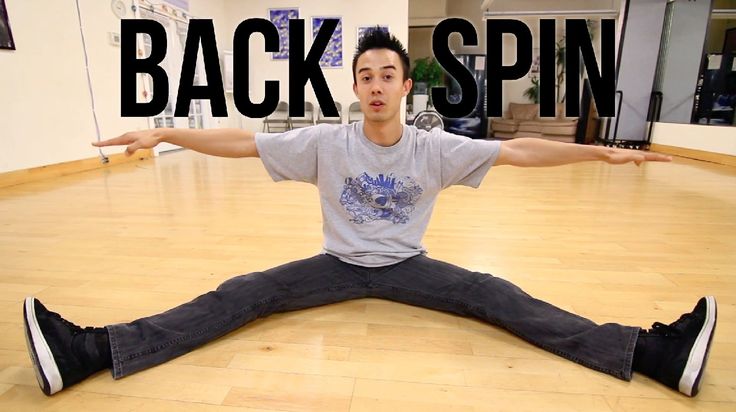 1985 © Melodiya Firm
1985 © Melodiya Firm The younger generation strove for individuality, and teenage fashion began to develop. Those who had the opportunity received clothes from abroad - mostly the children of wealthy parents. Others illegally bought it from peddlers. peddlers are private merchants who illegally bought things and currency from foreigners, and then sold them. patterns of Western models.
The most important attribute of street dancers is, of course, sneakers. In 1984, Chinese-made models were on sale, mostly black and brown. But dancing needs bright colors, so many people dyed sneakers themselves, by analogy with jeans.
1985
Breakdance on the Arbat and settlement of culture houses
In 1985, breaking ceased to be a dance of privileged youth and moved from apartments to gyms and dance floors. At the same time, the first professional dance groups appeared. The famous saxophonist and jazzman Alexei Kozlov created Break-Arsenal, a dance group based on the Arsenal musical group. Break Arsenal introduced the style to the public and gradually popularized it.
Break Arsenal introduced the style to the public and gradually popularized it.
In addition to the Break Arsenal, the important bands of that time include the Magic Circle, Mercury, Mirror and Vector.
Soviet children who read the Strugatsky brothers and Kir Bulychev were very attracted by the aesthetics of Afrofuturism. The influence of the school of mimes, which at that time was very popular, also had an effect. The audience was fascinated by the strange futuristic movements of the dancers: they moved like robots, making waves and lunar paths. Some tried to imitate them and looked for an opportunity to learn how to dance the same way.
Learning to breakdance and practicing moves requires a lot of space and mirrors. Dancers gradually settled in palaces and houses of culture.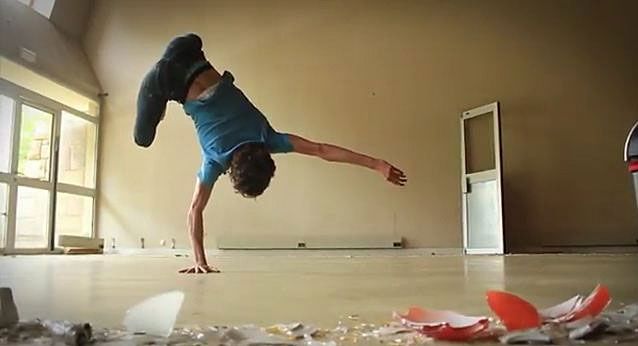 For the first time, breaking courses were organized in the Pravda Moscow Palace of Culture, they were led by circus director Valentin Gneushev. The Pravda school, named after the Palace of Culture where it was located, became one of the most developed: in the future, its students represented Russia at the All-Union Championships and showed break dance in the cinema.
For the first time, breaking courses were organized in the Pravda Moscow Palace of Culture, they were led by circus director Valentin Gneushev. The Pravda school, named after the Palace of Culture where it was located, became one of the most developed: in the future, its students represented Russia at the All-Union Championships and showed break dance in the cinema.
The first break parties where dancers shared new moves were at the dairy cafe. The dairy cafe served food and drinks made from dairy products, such as milkshakes and ice cream. "At the Fountain" (it was simply called "Milk"). It was the first permanent youth cafe in the capital.
“Moloko was a place for a really fashionable pastime, where a wide range of young people gathered: from iron-farmers to variety performers. Makarevich sat there from time to time. Sergei Penkin, Volodya Presnyakov gave some of their first concerts there. Even one of the New Year's lights was filmed there. The place was fashionable, and there we saw the performance of Volodya Ratskevich's Vector group for the first time.
That performance made an indelible impression. Thoughts “I want that too” were not only mine. From that day on, our studio members began to break their bodies for a break " Fragment from an interview with Mila Maksimova.
M. Buster. Hooligans-80. M., 2009..
Also, in 1985, breaking hit the streets. This was facilitated by the opening of the first pedestrian street, the so-called "showcase of perestroika" - Arbat. It was immediately occupied by street musicians, circus performers and break dancers. On the Arbat, a unique Russian style, "upper breakdance", also developed. The reason for its appearance is an incorrect interpretation of Western terms. What we called the top break, in fact, were styles electric boogie Electric boogie is a style that combines smoothness in movement and illusory forms (imitation of waves, robot movements), inspired by the aesthetics of Afrofuturism and the musical environment of New York (funk, electrofunk and other genres). and locking Locking is a social dance with characteristic bright images and the author's style of The Lockers, performed to funk music. Dance movements are interrupted by stops in certain positions, after which the dancer continues to move at his own pace. Russian dancers reasoned something like this: if you spin on the floor, you perform footwork elements0194 footwork - “foot movements”., you dance the lower break dance, as soon as you rise up, blow waves through your hands, imitate a robot or pharaoh Tutankhamun ( king-tut , or tutting ), this is already the upper break -dance. We can say that the term "upper breakdancing" appeared for the convenience of classifying and separating styles.
and locking Locking is a social dance with characteristic bright images and the author's style of The Lockers, performed to funk music. Dance movements are interrupted by stops in certain positions, after which the dancer continues to move at his own pace. Russian dancers reasoned something like this: if you spin on the floor, you perform footwork elements0194 footwork - “foot movements”., you dance the lower break dance, as soon as you rise up, blow waves through your hands, imitate a robot or pharaoh Tutankhamun ( king-tut , or tutting ), this is already the upper break -dance. We can say that the term "upper breakdancing" appeared for the convenience of classifying and separating styles.
At first, upper and lower breakdancing were closely related to each other. Often, performers of the lower style inserted elements of the upper style into their dance. But as it developed, everything became more complicated: people appeared who were exclusively interested in the upper or lower style. There was a gradual division into the so-called "top" and "bottom". Top breakdance existed in Russia until the 2000s. Its longevity is due to the fact that the first generation of Russian dancers (“old schoolers”) did not want to be retrained and lose their status:
There was a gradual division into the so-called "top" and "bottom". Top breakdance existed in Russia until the 2000s. Its longevity is due to the fact that the first generation of Russian dancers (“old schoolers”) did not want to be retrained and lose their status:
Break dance. Moscow, 1986 © Igor Boyko / RIA Novosti“The fact is that our country was closed until 91-92, information did not flow into Russia and did not flow out at all. Therefore, what has come down to us in 86-87 years - dancers began to grow on that, and their homegrown popping, locking grew - their homegrown tops. <...> When they became interested in what exists in the world, when the curtain opened in front of the West, they saw that everything had changed there so that they had to start learning from scratch if they wanted to dance the same way. But we did not have these sources, bases, roots - we did not know where the tree grew from. So we decided to build a house without a foundation. And a house without a foundation collapses from the first wind.
You need a deep foundation: the deeper it is, the more and better bases you can build on it. And I didn’t want to strain with the foundation - to start from scratch, because it’s a matter of status: they are old-schoolers and everyone respects them. And in order not to lose prestige in the eyes of the students, they did not recognize Western trends. As a result, they remained there, in that century, in that millennium” “I come to Russia to enlighten” // iDance.ru. April 4, 2007..
Now the “upper break” phenomenon is understood differently:
“This desire to learn to dance from scratch is precisely the property of young people in the periphery states. The guys want to learn how to do something like in the center (in our case, in the USA), to make the “correct” and “approved” version of art. And older guys understand that their art is their skill, they are not ready to give up their views on the movement.
And many of these views already at the end of the 10s again aroused genuine interest - the same Savenkov is now very relevant.
What happened in the mid-2000s - passionate youth appeared (like me, Lesha Bugi and Andrey Slide), who could not appreciate the originality of our Soviet school (in my case, in the pursuit of Western "approval", I could not appreciate our culture, unfortunately , it comes with years).
The old schoolers were that foundation. In Europe, which was not a country of the periphery in terms of culture, the "cassette" old school players completely survived and developed their styles, integrated into modern funk culture. Guys like Nils (b-boy Storm) and Steen (Steen) perform in theaters and do top choreography and no one says that it is “wrong” ” Fragment from an interview with Matvey Lebedev (Matt Fownk). Recorded by Olga Krupnik. April 2022..
1986
Video clips, battles and the Courier movie
In December 1986 Karen Shakhnazarov's film The Courier was released. He revealed the topic of generational conflict, and also tried to formulate new ideals and principles of young people in the era of perestroika. "Courier" became one of the leaders of the box office in 1987, and later the best film according to the results of a poll by the Soviet Screen magazine. It was a legendary picture for the Russian breakdance community. In the final scene of The Courier, street dancers show their skills on the courtyard. The song "Rockit" by B.T. & The City Slickers sounds: an arrangement of the canonical track by American composer and pianist Herbie Hancock.
He revealed the topic of generational conflict, and also tried to formulate new ideals and principles of young people in the era of perestroika. "Courier" became one of the leaders of the box office in 1987, and later the best film according to the results of a poll by the Soviet Screen magazine. It was a legendary picture for the Russian breakdance community. In the final scene of The Courier, street dancers show their skills on the courtyard. The song "Rockit" by B.T. & The City Slickers sounds: an arrangement of the canonical track by American composer and pianist Herbie Hancock.
Students of the Pravda dance school and other famous dancers, for example, Oleg Smolin and Konstantin Mikhailov from the Mercury group, starred in the film. Then "Mercury" appeared in the films "You Don't Mess With Robots" (1987) from the series of Soviet television plays "This Fantastic World", and later in the musical "The Rattlesnake Dozen" (1988) - in which tap dancers compete with break dance dancers.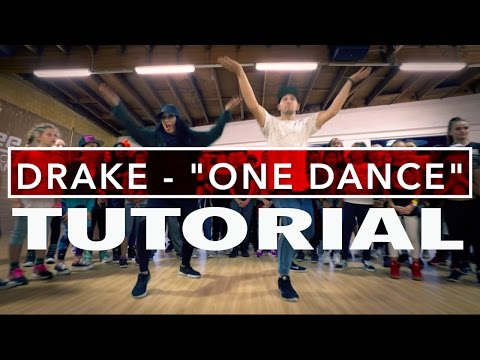 breakdancing can be found in the films "Publication" (1988) and “My name is Arlekino” (1988) — Moscow dancers appear in their episodes. A year before, the clips of Alla Pugacheva, as well as the Kino group, were released. At the same time, the future pop star Vladimir Presnyakov Jr. released a video for the song "Red Cat", in which he demonstrated the technique of breakdancing. The video was shown in the popular program "Morning Mail" on the First Program of Central Television. Another iconic video clip is the work of Alexander Kalyanov "Karabas-Barabas".
breakdancing can be found in the films "Publication" (1988) and “My name is Arlekino” (1988) — Moscow dancers appear in their episodes. A year before, the clips of Alla Pugacheva, as well as the Kino group, were released. At the same time, the future pop star Vladimir Presnyakov Jr. released a video for the song "Red Cat", in which he demonstrated the technique of breakdancing. The video was shown in the popular program "Morning Mail" on the First Program of Central Television. Another iconic video clip is the work of Alexander Kalyanov "Karabas-Barabas".
Movies and videos popularized breaking and made it part of popular culture: the audience interested in breakdancing has grown rapidly. Such excitement could not go unnoticed, and breaking received state support. The Ministry of Youth Affairs saw street dance as one of the ways to heal the nation.
Modern Tants Festival. Estonia, 1986 © Community “Break Dance the 80s — Old School” / Fair use there is a regular music festival in the country. 26 April 1986 years in the city of Vinni (Estonian SSR) the first all-Union breaking festival called Modern Tants was held. And in the autumn of the same year, the all-Union final was held in Tallinn, which brought together the best Russian break dancers:
26 April 1986 years in the city of Vinni (Estonian SSR) the first all-Union breaking festival called Modern Tants was held. And in the autumn of the same year, the all-Union final was held in Tallinn, which brought together the best Russian break dancers:
Modern Tants Festival. Estonia, 1986 © Community "Break Dance the 80s - Old School" / Fair use“In 1986, an all-Union break dance competition was held in Tallinn. This was done by local Komsomol members, who were well prepared. We rented the entire Sport Hotel and settled it with delegates from Minsk, Kyiv, Riga, St. Petersburg, Kharkov, and, of course, Muscovites. There were 100 participants alone. At the same time, everyone went with support groups, pretended and noisy. When all this crowd gathered in the hotel, the attendants went crazy. Loud music played around the clock. In all the corridors, the participants were rehearsing and fans were wandering around; there was a feeling of complete happiness. By the way, there were no drunks, which, you see, is not typical for a subculture ” A fragment from an interview with Mila Maximova.

M. Buster. Hooligans-80. M., 2009..
Most of the break festivals were held in the battle format. Battle is the main communication tool for street dancers. It is a dance opposite each other, while the performers are surrounded by people. In fact, the battle is a continuation of the folklore tradition, the transfer of rural dance practices to the city. The dancers take turns doing their exits, demonstrating their technique and telling their story. Dance itself is a means of communication. Accordingly, a battle is a conversation between two dancers, an exchange of dance information.
As in a good conversation, a whole new dance idea, movement or concept can be born at a battle. An important role is also played by the skill of improvisation, that is, the creation of new movements without preparation. Street performers understand dance as a job that requires many hours of training to achieve results: this brings breakdancing closer to academic dance.
Later, battles became a part of professional activity for dancers. By participating in them, they remain visible and continue to function in the community as educators or judges. Despite the fact that breakdance battles can look quite aggressive, the participants consider them primarily a cultural exchange. Some demonstration battles are called that - exchange (from English - "exchange").
1987
Luberas, breakers and informal culture
Participants of the break dance school at the Prioksky Palace of Culture. Ryazan, 1987 © Vitaly Karpov / RIA Novosti
By 1987, breakdance had gained an all-Union scale. Festivals were held not only in the Baltic States, but also in Russia, Belarus and Ukraine. The competitions lasted for several days and were broadcast on local television. In parallel with the dawn of the breaking culture, informal associations also developed: rockers, hippies, punks, metalheads, as well as luberas (or lubers) - aggressive young guys from the city of Lyubertsy near Moscow.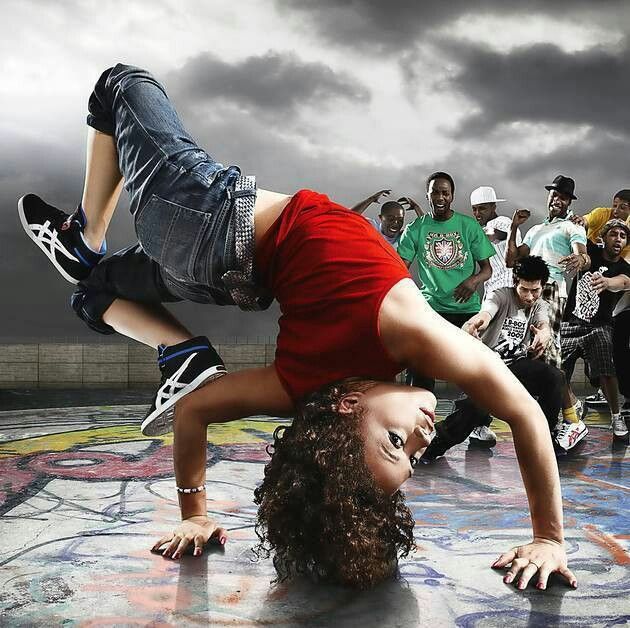 They actively promoted a healthy lifestyle and were at enmity with fashionable informals. Luber was mostly not touched by breakers because of respect and love for the sport. However, it went to those who looked too fashionable or "ironed" That is, they were a farce. items:
They actively promoted a healthy lifestyle and were at enmity with fashionable informals. Luber was mostly not touched by breakers because of respect and love for the sport. However, it went to those who looked too fashionable or "ironed" That is, they were a farce. items:
“At the same time, of course, groups of Lubers cruised around the city and often watched the breakers, but did not particularly touch them. Apparently, related sports styling and a dismissive attitude on the part of radical informals, with whom they began a real war, had an effect. Back in 86, I met a guy who lived on Zhdani, who at first gravitated towards the break, and then, already in 88, I met him, but already in a bull suit and with other interests in his head. He then indicated to me that we do not touch the breakers, but only drive the majors, irons and radicals. At the same time, the breakers themselves, willy-nilly, were forced to do ironing in order to “keep the style” and “be in the know” ” Fragment from an interview with Ilya Pincher.
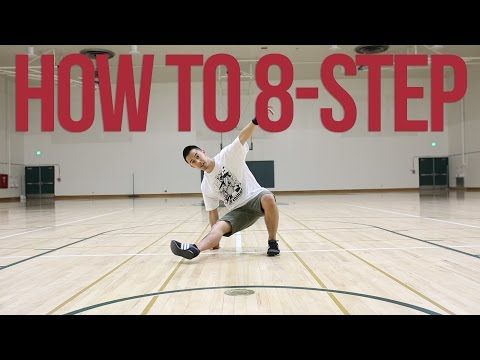
M. Buster. Hooligans-80. M., 2009..
In 1987, a film by Latvian director Juris Podnieks “Is It Easy to Be Young?” was released. The film told about the Soviet youth of the early 1980s: their desires, dreams and difficult relationships with their parents. In a sense, he formulated the meaning of informal associations for young people of this era.
Juris Podnieks. "Is it easy to be young?". 19871988
Triumph of Russian rock
Still from the film Assa. Directed by Sergei Solovyov. 1987 © Mosfilm Film Studio; Creative Association "Krug"
In 1988, Sergei Solovyov's film "Assa" was released. He immediately approved the unconditional triumph of Russian rock. A vinyl record with songs from "Assy" became one of the first official publications of Russian rock music.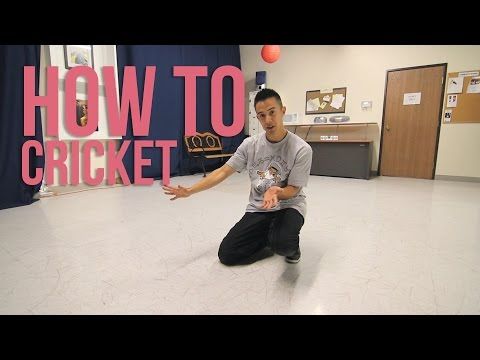 The soundtrack included compositions by Boris Grebenshchikov and the Aquarium group, the Bravo group with Zhanna Aguzarova and the Kino group:
The soundtrack included compositions by Boris Grebenshchikov and the Aquarium group, the Bravo group with Zhanna Aguzarova and the Kino group:
Youth on the streets of Minsk. 1988 © Evgeny Koktysh / RIA Novosti“Sergey Solovyov broke me even more, who almost invited me to the main role in his Assu. Few people know that at first he wanted to mix the artistic part of the film with breakdance. We went to Mosfilm, even did screen tests. But then Solovyov went to St. Petersburg, and they convinced him there that break dance was already going down, and the new wave was rock music. Then he decided to bet on rock, chose Africa for the main role according to my type, and transferred the musical part to Kino, Aquarium and other St. Petersburg groups. While the film matured, this wave really came up. ” The history of Russian breakdance // School of breakdance "Volnorez". 2013..
The breaking wave was indeed gradually fading away. Many dancers were taken to the army, the rest started families. The Pravda Palace of Culture was closed, and smart children's groups began to dance break dance. So the style faded away.
Many dancers were taken to the army, the rest started families. The Pravda Palace of Culture was closed, and smart children's groups began to dance break dance. So the style faded away.
But the most enthusiastic b-boys B-boy/b-girl (eng. b-boy / b-girl) - a person who dances break dance. continued to perform on the Arbat and delve into the history of style. They began to understand breakdancing as part of the hip-hop culture, which includes not only dance, and discovered rap for themselves:
“Back in 1988, everyone knew that there was not only break, but also rap, so attempts to read were made repeatedly. Timur Mammadov, I remember, on the Arbat, on April 1, when people were dancing on the stage and for some reason the tape recorder did not work, he composed on the go and read this to the clapping rhythm ... Like: “So, friends! As you can see, we are breakers from the city of Moscow. I won’t surprise you with this, I’m starting to rap…“” Fragment from an interview with Ilya Pincher.

M. Buster. Hooligans-80. M., 2009.
1989 and early 1990s
From breakdance to rap
In 1989, the first rap groups appeared. The dance group "Mercury" has transformed into a rap group DMJ, consisting of two soloists and three dancers. The hip-hop duo "Black and White" took on break dancers from the "Stop" team.
1989 - the year of the founding of the Bad Balance team: it was formed from the White Gloves break dance group. At 19In 1990, the well-known musician and singer Mikhey joined her. Later they became legends of the local hip-hop culture. The team members not only wrote music and rapped, but also danced break dance. And in 1991, the group "Bachelor Party" appeared, consisting, in fact, of Arbat street dancers.
The Malchishnik band © Rock 'n' Roll Wiki Breaking was further developed within the hip-hop culture. Strong horizontal links have developed between dance, music and art (graffiti). People moved from one type of creativity to another, spent time together and organized events.
People moved from one type of creativity to another, spent time together and organized events.
The first wave of breakdancing was marked by protest and street action, which was later compensated by sports (numerous championships) and cultural (joint hangouts and events) projects. However, the subculture is inextricably linked with the protest: it gives energy for development and social unification, which is difficult to replace with something.
“I started in the late 90s, and for us it was also a protest. We protested against the attempts of schools, sports clubs and parents to turn young people into a gray mass, who had to dress so as not to stand out, not to listen to loud music and so on. It was a protest against something different than in the 80s, but it was one hundred percent" Fragment from an interview with Jan Nemalovsky. Recorded by Olga Krupnik. 2022..
In the future, breaking has become more professional in terms of technique, and intercultural exchange has become stronger.

